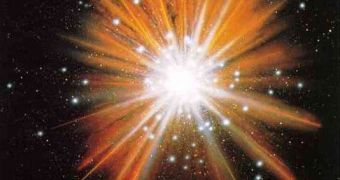The fine-structure constant or Sommerfeld fine-structure constant, usually denoted ? is the fundamental physical constant characterizing the strength of the electromagnetic interaction. It is a dimensionless quantity, and thus its numerical value is independent of the system of units used.
Using relic radiation from the birth of the universe, astrophysicists at the University of Illinois have proposed a new way of measuring the fine-structure constant in the past, and comparing it to today's. Physicists have been wondering for many years whether the fine structure constant is really a constant, i.e., whether or not its value is different at different times or in different places. Historically, a varying ? has been proposed as a means to solve some of the perceived cosmological problems of the day.
More recently, theoretical interest in varying constants has been motivated by string theory and other such proposals for going beyond the Standard Model of particle physics.
By focusing on the absorption of the cosmic microwave background by atoms of neutral hydrogen, the researchers say they could measure the fine-structure constant during the "dark ages," the time after the Big Bang before the first stars formed, when the universe consisted mostly of neutral hydrogen and helium.
"There is a void from about 300,000 years after the Big Bang, when radiation that formed the cosmic microwave background was emitted, to about 500 million years later, when the first stars formed," Wandelt said. "Our measurement technique could probe the fine-structure constant during this period.
"If the fine-structure constant does vary over time and space, we could use it as a probe of new physics beyond the standard model and beyond general relativity," said Benjamin Wandelt, a cosmologist at the Illinois, who developed the proposed measurement technique.
The new measurements could have applications in astrophysics and quantum physics, since this fine-structure constant "has been a mystery ever since it was discovered more than fifty years ago, and all good theoretical physicists put this number up on their wall and worry about it," - Richard P. Feynman, The Strange Theory of Light and Matter, Princeton University.

 14 DAY TRIAL //
14 DAY TRIAL //